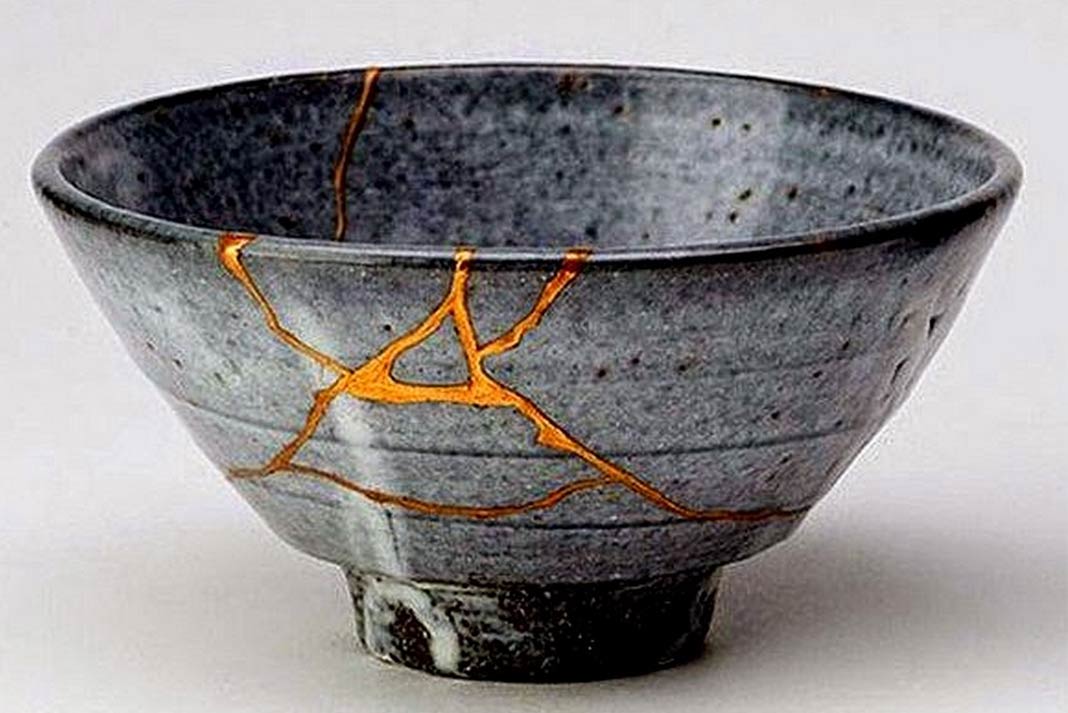
“We are stronger in the places we have been broken.” — Japanese Proverb
The Japanese have an art form called “Kintsugi,” which means “golden journey.” In this process they repair a valuable old broken piece of pottery with liquid gold, bringing the pieces together to make the item whole again. Rather than hiding the breaks, they enhance them. Kintsugi treats the breakage and repair as part of the history of the object.
The final product is an amazingly beautiful piece of art and a reminder that something so unique has a beauty of its own that cannot be destroyed, no matter how old or tattered. The Japanese tell us it is always worth mending the broken and, in fact, the fractures and scars become part of the overall beauty. In the end, the mended piece is more precious than the original.
If pottery can be thought of in that way, why can we not apply the same philosophy to ourselves? As I have aged, the perfect body that I was given at birth has changed, worn out, and even fractured in places. As each part has given way to something different, I have mourned the loss, and even denied the change occurring in my perfect body. I have felt betrayed by the body I was given that is now letting me down.
Acceptance of evolution that occurs with aging is not a skill our culture teaches us to accept. Consequently, we often become depressed, angry, or even worse, disengaged, as we go through aging. The question I find myself saying is, “If I cannot be the way I used to be, what am I? “
Struggling with this thought, I have come to realize that shifting my thinking is actually the work of my life at this stage in my journey — the Golden Journey. It is, in fact, all about the essence of resilience. It is the time for us to reflect and remember how resilient we have been and still are. Every experience I have encountered, either positive or negative, has been a lesson that has made me the unique person that I am today. The fact that I have weathered the storms and come out whole and intact attests to my resilience.
These lifetime accomplishments should be worn as a badge of pride instead of being hidden in our anger and sorrow. We should look at our scars, wounds, and imperfections as part of our present beauty instead of seeing them as done and no longer of use. Just as the mended pottery, we should see the fractures as part of our overall perfection. We are not the same as we were, but we can still be of value and beauty.
Nature attests to this philosophy, because if we look closely we realize all things have unique imperfections. The flower that is not “picture perfect” does not regret blooming. It blooms anyway and still has something to offer, if only to the bees. We, too, in our broken and scarred being, still have much to offer because our repaired parts, like the pottery, are pure gold and therefore more precious than the original.
Just like the golden objects mended by Kintsugi, all our breakage and mending are honest parts of our past. These should be celebrated, not hidden. They are pieces and parts of our true self. The Japanese take the healed pottery and place it back on display for all to admire and enjoy. When occasions occur, they use the pottery and enjoy the uniqueness of the mended parts.
Through my own golden journey I have come to realize that every beautiful thing can be damaged, but that I truly am more beautiful and stronger for having been broken.









